To ensure fair play and consistent gameplay, adhering to the dartboard dimension requirements for league play is paramount; specifically, the bullseye should be 5 feet 8 inches from the floor, and the throwing distance should be 7 feet 9 En 1/4 inches. This article will delve into all the official specifications, the reasons behind them, and tips for setting up your dartboard correctly for league or tournament standards, as well as related concepts like the **oche** and dartboard maintenance.
⚠️ Still Using Pen & Paper (Of een schoolbord)?! ⚠️
Stap in de toekomst! De Dart Teller -app behandelt alle scoren, stelt kassa voor, en volgt uw statistieken automatisch. It's easier than you think!
Probeer de Smart Dart Teller -app gratis!Klaar voor een upgrade? Klik hierboven!
Understanding Official Dartboard Dimension Requirements for League Play
When participating in a darts league, it’s crucial that your setup meets the official dartboard dimension requirements for league play. These regulations are in place to guarantee fairness and consistency across all matches, ensuring that every player is competing under the same conditions. Ignoring these specifications can lead to disqualification or, at the very least, an uneven playing field. Let’s break down the key measurements.
- Height: The vertical distance from the floor to the center of the bullseye must be exactly 5 feet 8 inches (1.73 meters).
- Throwing Distance (Oche): The horizontal distance from the face of the dartboard (specifically, a plumb line dropped from the face) to the front of the throwing line (the oche) should be 7 feet 9 En 1/4 inches (2.37 meters).
These seemingly simple measurements are the foundation of competitive darts. Deviating from them, even slightly, can alter the trajectory and difficulty of throws, impacting player performance. De oche, or throwing line, is a critical element in maintaining consistent game play, and it is one of the most overlooked aspects of setting up a **dartboard**.
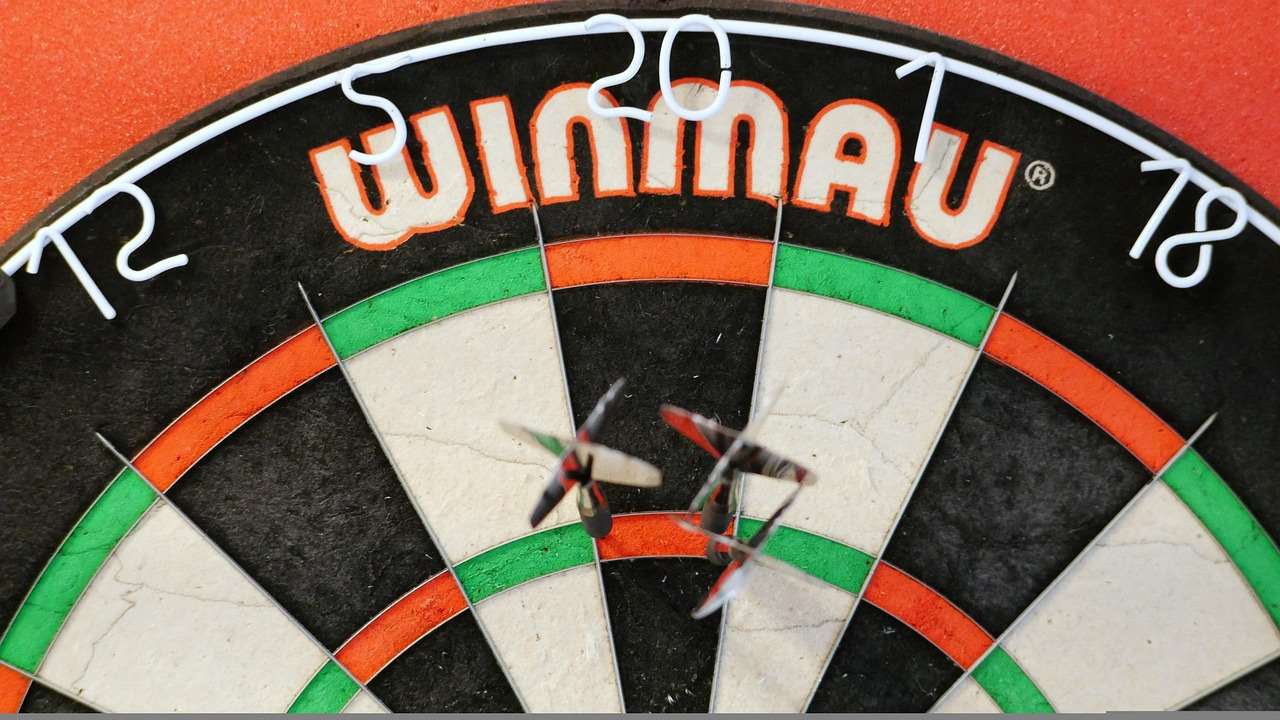
Why Are Specific Dartboard Dimensions Required?
The precise dartboard dimension requirements for league play aren’t arbitrary. They’ve evolved over time, based on experience and experimentation, to create a standardized and challenging playing environment. Several factors contribute to the importance of these measurements:
- Fairness: Standardized dimensions ensure that all players face the same challenges, regardless of the venue. This eliminates any potential advantage or disadvantage based on differing setups.
- Consistency: Maintaining consistent dimensions across all games helps players develop their technique and accuracy, knowing that the target will always be in the same relative position.
- Skill Development: The specified height and distance are designed to provide a challenging yet achievable target, promoting skill development and strategic play.
- Professionalism: Adhering to official regulations adds a level of professionalism to league play, enhancing the overall experience for participants and spectators.
Imagine playing a game where the dartboard height or throwing distance varied from match to match. It would be incredibly difficult to develop a consistent throwing style and strategy. The standardized dimensions provide a level playing field where skill and practice are the determining factors for success. Understanding **dartboard maintenance** can also enhance your experience.
Setting Up Your Dartboard Correctly: A Step-by-Step Guide
Now that you understand the importance of dartboard dimension requirements for league play, let’s walk through the process of setting up your dartboard correctly. Accuracy is key, so take your time and double-check your measurements.
- Choose a Suitable Location: Select a location with sufficient space for players to stand and throw comfortably. Ensure the wall is sturdy enough to support the dartboard.
- Mark the Bullseye Height: Use a measuring tape and a level to mark a point on the wall exactly 5 feet 8 inches (1.73 meters) from the floor. This will be the center of your bullseye.
- Mount the Dartboard: Follow the manufacturer’s instructions for mounting the dartboard. Ensure it is securely attached to the wall and that the bullseye aligns with the mark you made.
- Measure the Throwing Distance: Use a measuring tape to measure 7 feet 9 En 1/4 inches (2.37 meters) horizontally from the face of the dartboard (use a plumb line to ensure accuracy) out towards the throwing area. Mark this spot.
- Install the Oche: Place the oche (throwing line) at the marked spot. It can be a raised line, a piece of tape, or any other suitable marker.
- Double-Check Your Measurements: Before playing, double-check all measurements to ensure accuracy. A slight error can significantly impact your game.
By following these steps carefully, you can ensure that your dartboard setup meets the official dartboard dimension requirements for league play. This will provide a fair and consistent playing environment for you and your opponents. Remember to consider space constraints too; you can start by Adapting darts rules for small spaces: tips and tricks.
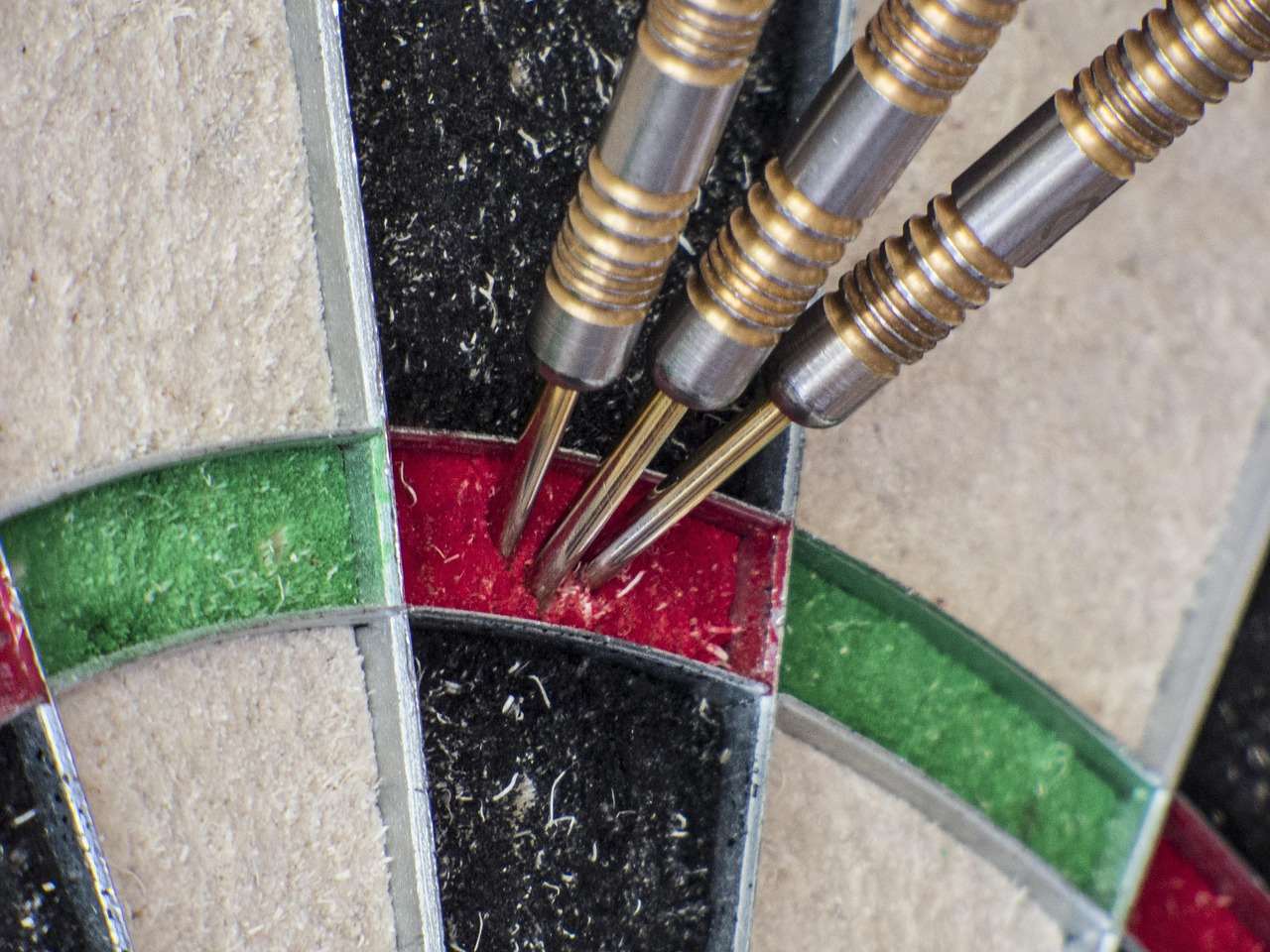
Common Mistakes to Avoid When Setting Up Your Dartboard
While the setup process seems straightforward, there are several common mistakes that people make when trying to meet the dartboard dimension requirements for league play. Avoiding these errors will ensure a more accurate and enjoyable playing experience.
- Incorrect Bullseye Height: Failing to accurately measure the bullseye height is a common mistake. Even a small difference can affect your throwing trajectory. Use a level and a measuring tape for precise measurements.
- Inaccurate Throwing Distance: Not measuring the throwing distance correctly is another frequent error. Ensure you measure from the face of the dartboard (using a plumb line) to the front of the oche.
- Unstable Dartboard Mounting: If the dartboard is not securely mounted to the wall, it can wobble or move during play, affecting your accuracy. Use appropriate mounting hardware and ensure the board is firmly attached.
- Ignoring the Oche Placement: Simply guessing the location of the oche is a recipe for disaster. Use a measuring tape to accurately mark the throwing distance and place the oche accordingly.
Paying attention to these details will help you avoid common setup errors and create a playing environment that meets the official dartboard dimension requirements for league play. Consider how to make the game more approachable by Darts -regels aanpassen voor beginners.
The Importance of Proper Lighting for Dartboard Accuracy
Terwijl dartboard dimension requirements for league play focus on measurements, proper lighting is equally critical for accuracy and enjoyment. Without adequate lighting, it can be difficult to see the target clearly, leading to misthrows and frustration.
Here are some tips for ensuring proper dartboard lighting:
- Use a Dedicated Dartboard Light: Invest in a dedicated dartboard light that is specifically designed to illuminate the board evenly. These lights typically mount above the board and provide focused, shadow-free illumination.
- Avoid Glare: Position the light to minimize glare, which can make it difficult to see the target. Adjust the angle and intensity of the light as needed.
- Ensure Even Illumination: Make sure the entire dartboard is evenly illuminated, without any dark spots or shadows. This will help you see the target clearly and accurately.
- Consider Ambient Lighting: In addition to the dartboard light, consider the ambient lighting in the room. Avoid overly bright or dim lighting, which can affect your vision.
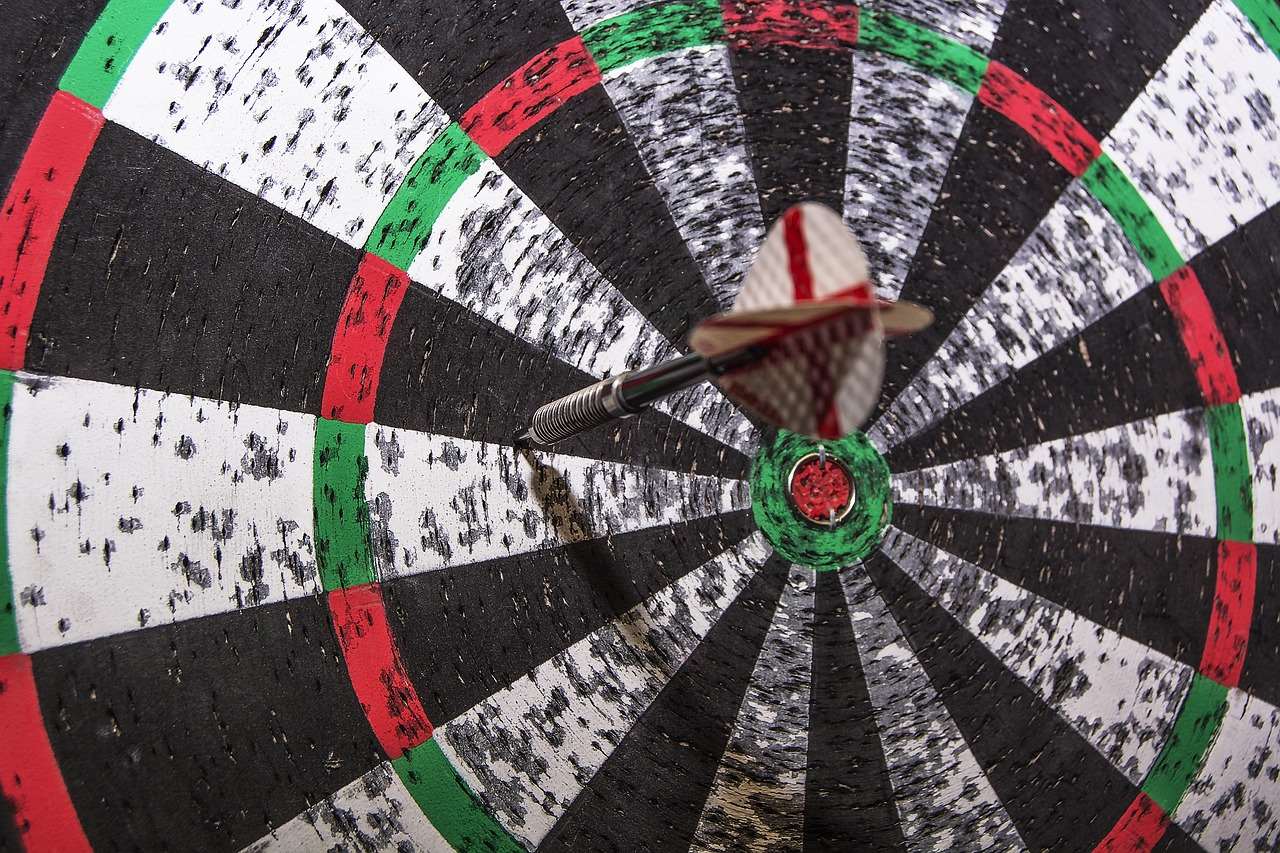
Proper lighting can significantly improve your dart-playing experience and enhance your accuracy. By investing in a good dartboard light and paying attention to ambient lighting, you can create an optimal playing environment that meets the spirit, if not explicitly the letter, of dartboard dimension requirements for league play.
Beyond the Basics: Additional Considerations for League Play
Terwijl de dartboard dimension requirements for league play and proper lighting are essential, there are a few additional considerations that can enhance your league experience.
- Dartboard Surround: A dartboard surround is a protective barrier that surrounds the dartboard, preventing damage to the wall from stray darts. It’s a worthwhile investment, especially if you’re playing in a shared space.
- Dart Mat: A dart mat is a floor covering that protects your flooring from dropped darts and provides a consistent throwing surface. It also helps to maintain the correct throwing distance.
- Scoreboard: A scoreboard is essential for keeping track of scores during league play. You can use a traditional chalkboard or a digital scoreboard.
- Dart Caddy: A dart caddy is a convenient way to store and transport your darts. It keeps your darts organized and protected.
These additional considerations can enhance your league play experience by providing added protection, gemak, and organization. Think creatively; there are many ways to use creative dart rules for parties and social gatherings.
Maintaining Your Dartboard for Optimal Performance
Proper maintenance is crucial for ensuring the longevity and optimal performance of your dartboard. By following a few simple steps, you can keep your dartboard in top condition and enjoy consistent gameplay for years to come.
- Rotate Your Dartboard Regularly: Rotating your dartboard regularly helps to distribute wear and tear evenly, preventing specific areas from becoming overly worn.
- Remove Darts Carefully: Always remove darts carefully by twisting them slightly as you pull them out. This will minimize damage to the board’s fibers.
- Moisten the Board (If Necessary): In dry climates, you may need to occasionally moisten the board to prevent it from drying out and cracking. Use a damp cloth to gently wipe the surface of the board.
- Avoid Excessive Moisture: Omgekeerd, avoid exposing the board to excessive moisture, as this can cause it to warp or mildew.
- Clean the Board Regularly: Use a soft brush to remove dust and debris from the board’s surface.
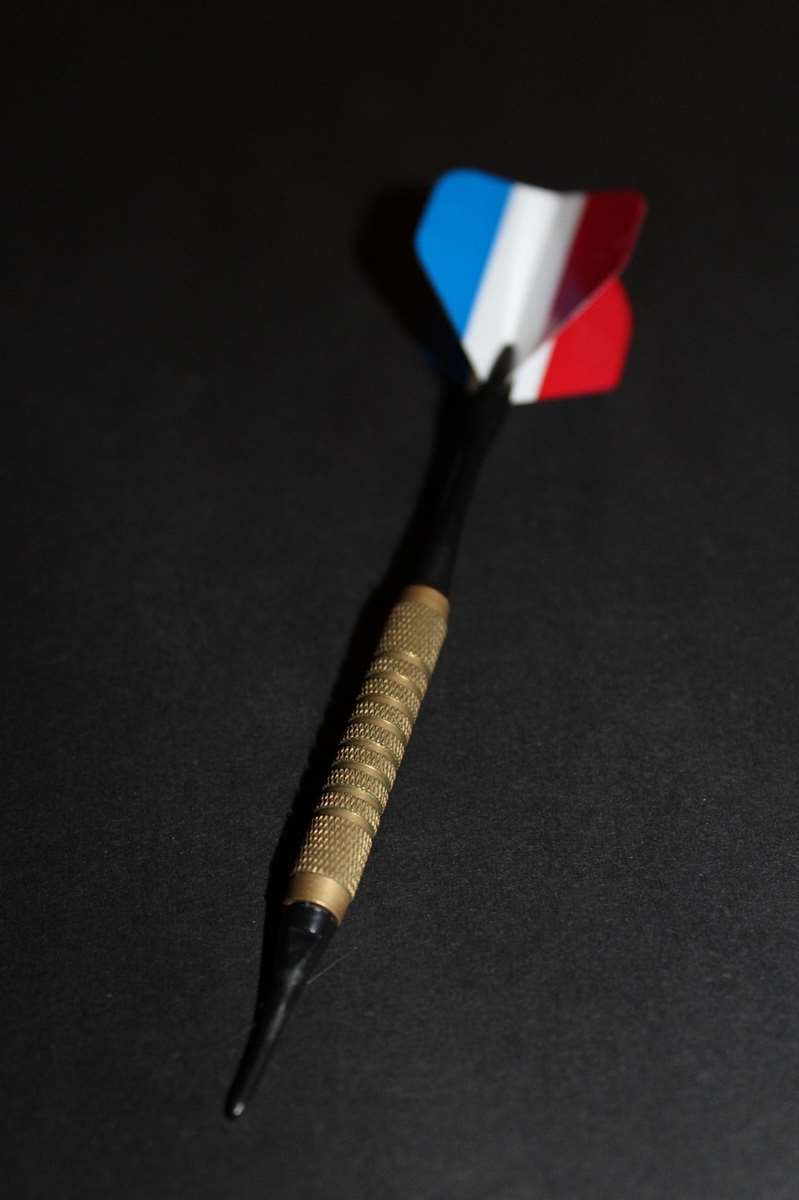
By following these maintenance tips, you can extend the life of your dartboard and ensure consistent performance. Proper maintenance is just as important as adhering to the dartboard dimension requirements for league play.
Addressing Common Issues with Dartboard Setup
Even with careful setup and maintenance, you may encounter some common issues with your dartboard. Here’s how to address them:
- Darts Falling Out: If your darts are frequently falling out of the board, it may be due to worn-out board fibers. Rotate the board or consider replacing it. Also, ensure you are using darts with sharp points.
- Uneven Surface: If the board’s surface is uneven, it can affect your accuracy. Rotate the board to distribute wear evenly, or consider replacing it if the problem persists.
- Wobbly Board: If the board is wobbly, tighten the mounting hardware or use shims to stabilize it.
- Incorrect Measurements: Double-check your measurements regularly to ensure they are still accurate. Na verloop van tijd, the board may shift slightly, affecting the height and throwing distance.
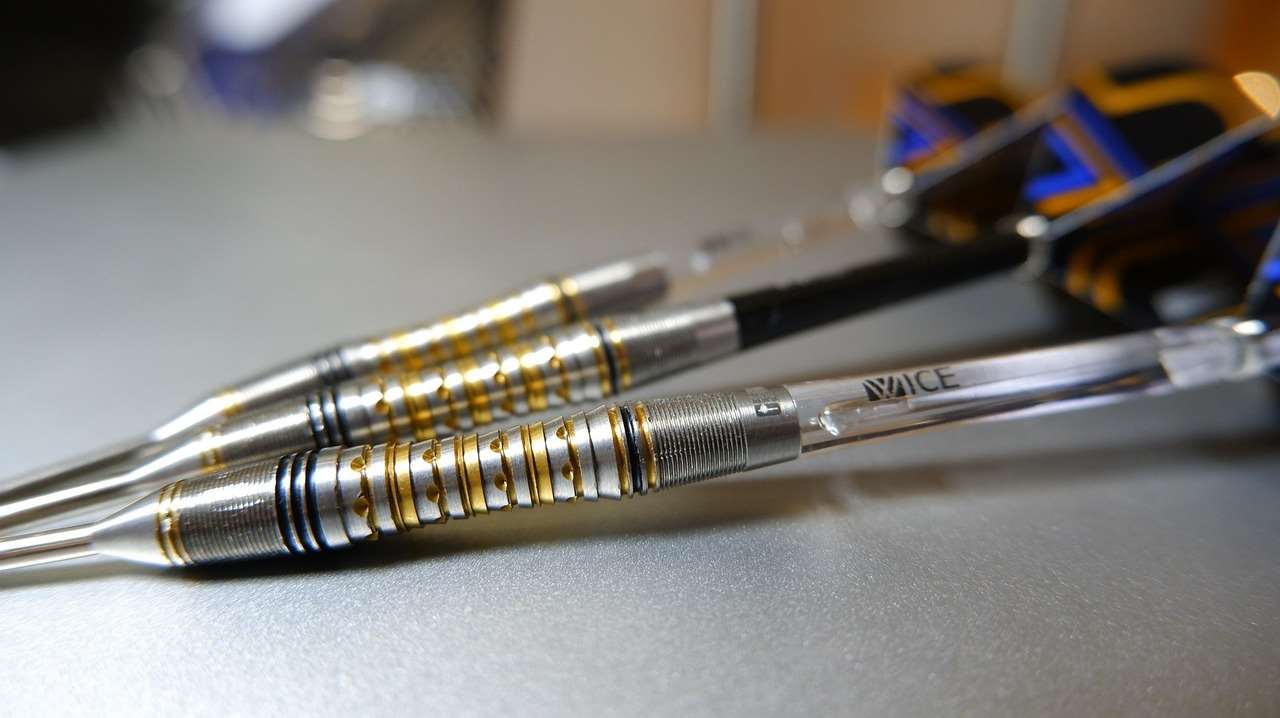
By addressing these common issues promptly, you can maintain a consistent and enjoyable playing experience that meets the dartboard dimension requirements for league play. Now that you are aware of the proper league guidelines, beoordeling Basic Darts Fundamentals for Beginners.
Conclusie: Mastering the Dartboard Dimensions for League Success
Adhering to the dartboard dimension requirements for league play is not merely a formality; it’s the bedrock of fair and consistent competition. By ensuring that your bullseye is at the correct height (5 feet 8 inches) and your oche is precisely measured (7 feet 9 En 1/4 inches), you’re setting the stage for accurate throws, strategic gameplay, en uiteindelijk, league success. Beyond the measurements themselves, remember the importance of proper lighting, regular maintenance, and addressing common setup issues. All these elements contribute to an optimal dart-playing environment.
Dus, grab your measuring tape, double-check your setup, and get ready to dominate the dartboard! Now that you’re armed with the knowledge of official regulations, consider joining a local dart league to put your skills to the test. Happy darting!
Hoi, Ik ben Dieter, En ik heb Dartcounter gemaakt (Dartcounterapp.com). Mijn motivatie was geen darts -expert - helemaal tegenovergestelde! Toen ik voor het eerst begon te spelen, Ik hield van het spel, maar vond het moeilijk en afleidend om nauwkeurige scores te houden en statistieken te volgen.
Ik dacht dat ik niet de enige kon zijn die hiermee worstelde. Dus, Ik besloot om een oplossing te bouwen: een eenvoudig te gebruiken applicatie die iedereen, Ongeacht hun ervaringsniveau, zou kunnen gebruiken om moeiteloos te scoren.
Mijn doel voor Dartcounter was eenvoudig: Laat de app de nummers afhandelen - het scoren, de gemiddelden, de statistieken, Zelfs checkout suggesties - zodat spelers puur kunnen richten op hun worp en genieten van het spel. Het begon als een manier om het probleem van mijn eigen beginners op te lossen, En ik ben heel blij dat het is uitgegroeid tot een nuttig hulpmiddel voor de bredere darts -community.